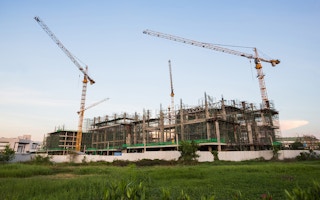Going green as a construction contractor is easier and more profitable than you think. Far more than a simple buzzword, green construction is fast becoming a critical sector brimming with opportunities. So sure, you already have a surety bond to protect your clients by ensuring you comply with all contracts and regulations, but protecting the environment and your bottom line further starts with green construction.
To continue reading, subscribe to Eco‑Business.
There's something for everyone. We offer a range of subscription plans.
- Access our stories and receive our Insights Weekly newsletter with the free EB Member plan.
- Unlock unlimited access to our content and archive with EB Circle.
- Publish your content with EB Premium.
Lead with LEED
The LEED (Leadership in Energy and Environmental Design) point system is internationally recognized as a mark of excellence in green building. LEED has five rating systems based upon the type of project and four levels of certification depending on the amount of points a project earns. These pertain to energy usage, indoor air quality, the renewability of materials used, as well as other points relating to energy and health.
This rating system may have high standards but the end result is a project that saves you money. But how can it do this?
Municipal credits make cents
One way in which LEED certification can save you money is through municipal incentives. Municipalities often encourage green construction by incentivising LEED certified buildings. These incentives come in many forms, they may discount building permit fees, or allow additional building density. Some cities, like Babylon, New York, will refund certification fees paid to the U.S. Green Building Council (USGBC) if LEED certification is achieved.
The specific way in which municipalities incentivise? LEED structures varies, but they’re all designed to save contractors money either directly or through easing the building or approval process. Legal experts expect this trend to continue in the future as more municipalities try to attract the latest green construction trends. So be sure to keep on top of the latest laws surrounding LEED construction to ensure you take advantage of these incentives.
How to keep money in your pocket
Beyond the benefits that can be reaped through legal incentives, green construction can keep some of those hard earned dollars in your pocket as well. Building green can create less waste and help you save on building materials. Here’s how it can save you money on-site, every day:
Plan strategically with standard sizes in mind
For those who are involved in the design process, you can strategically plan with standard building material sizes in mind to avoid leftover materials. Not having to pay for excess materials to be hauled off will save you an added and unnecessary cost. Of course, you already likely try to reduce waste, but simply creating a system or voicing this as a more overt goal to employees can make the whole process more focused and efficient.
Make your cash back through salvage and recycling
Construction and demolition salvaging or recycling can result in cash back in materials. Recycling and salvage companies often pay for used and new materials, though it’s important to know your local requirements. Local government recycling programs and even sites like Craigslist can also be great resources for effective cost management on surplus materials. Plus, being able to say you recycle can boost your public image. Combining these strategies is a win-win.
Save more by repurposing
You can reuse onsite waste by using sawdust and chipping cleared trees and brush for mulching walkways and landscaping. There are many ways to reuse onsite waste rather than hauling it away. Be creative, but make sure you follow all state and local laws. When there’s less to buy and less to take away, you save. Once again, simply being aware of your options and creating a culture within your firm to look for such opportunities can make a huge difference.
Don’t let water cost you
Divert runoff to prevent topsoil from washing away. When you lose topsoil, you have to replace it both for aesthetics and to avoid compromising any structures which may rely on it. So, ensuring any water runoff is cleanly diverted away without taking topsoil with it from the beginning is a great way to prevent problems and save money in the long-run.
It’s good to be trendy
Green construction is in demand. A 2008 study on green construction by McGraw Hill and the National Association of Home Builders showed that 56 per cent of builders thought it was easier to market a “green” house than a house of standard construction during the economic recession, and 60 per cent of builders said that consumers are more willing to buy a “green” home. This means contractors with green credentials can charge higher prices for their higher quality work.
Start Saving with green construction today
Builders wanting to commit to obtaining LEED certifications for their projects should learn about city and state credits, devote time to careful planning, and create top down enforcement of new standards. Once you have a good plan, you can start saving without having to wait for a credit or a sale.
If you can combine all of these techniques, the savings can really add up.
Eric Halsey is a writer with experience with high-end air filtration systems and an interest in US small businesses. This article was written exclusively for Eco-Business.










